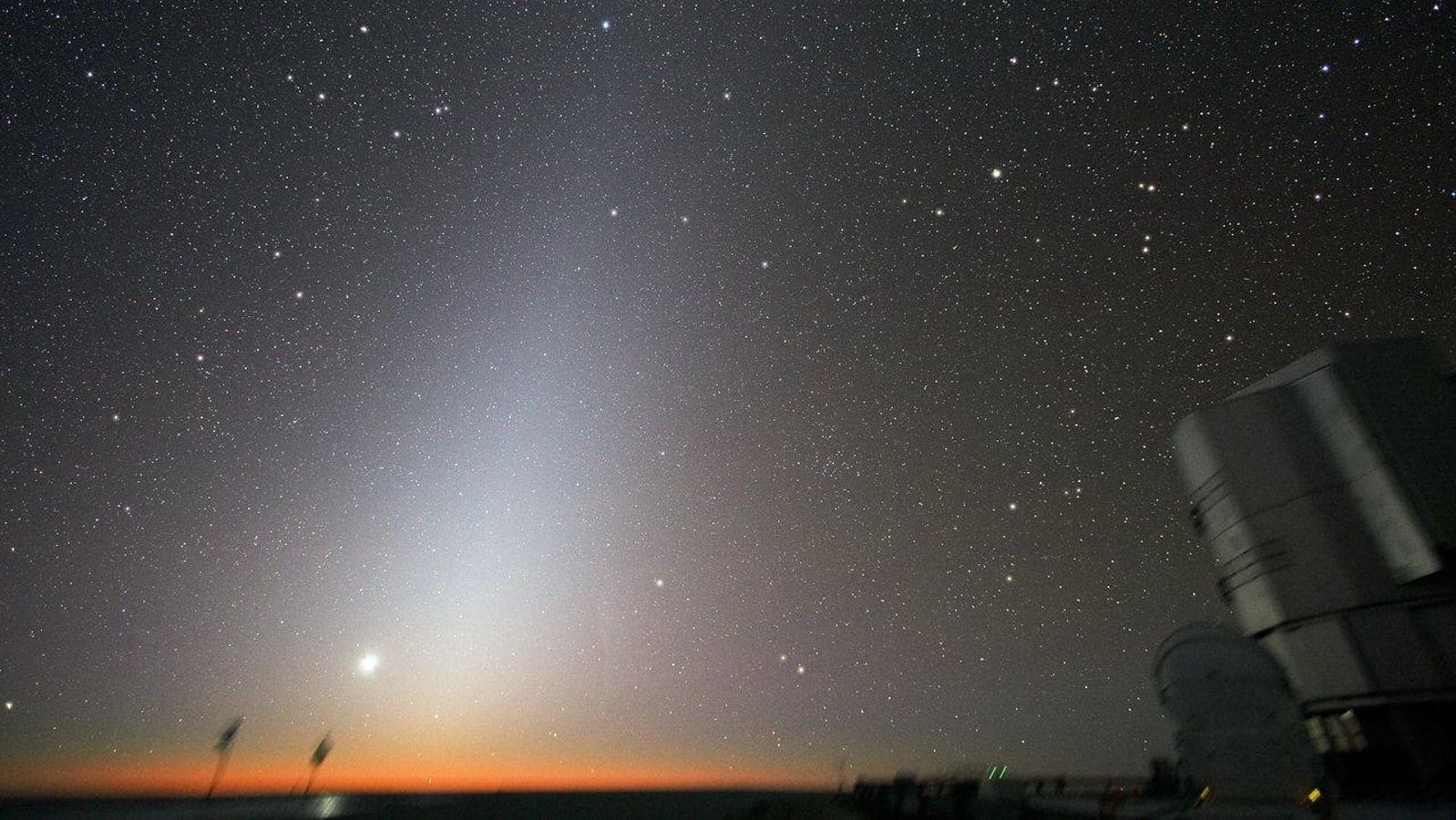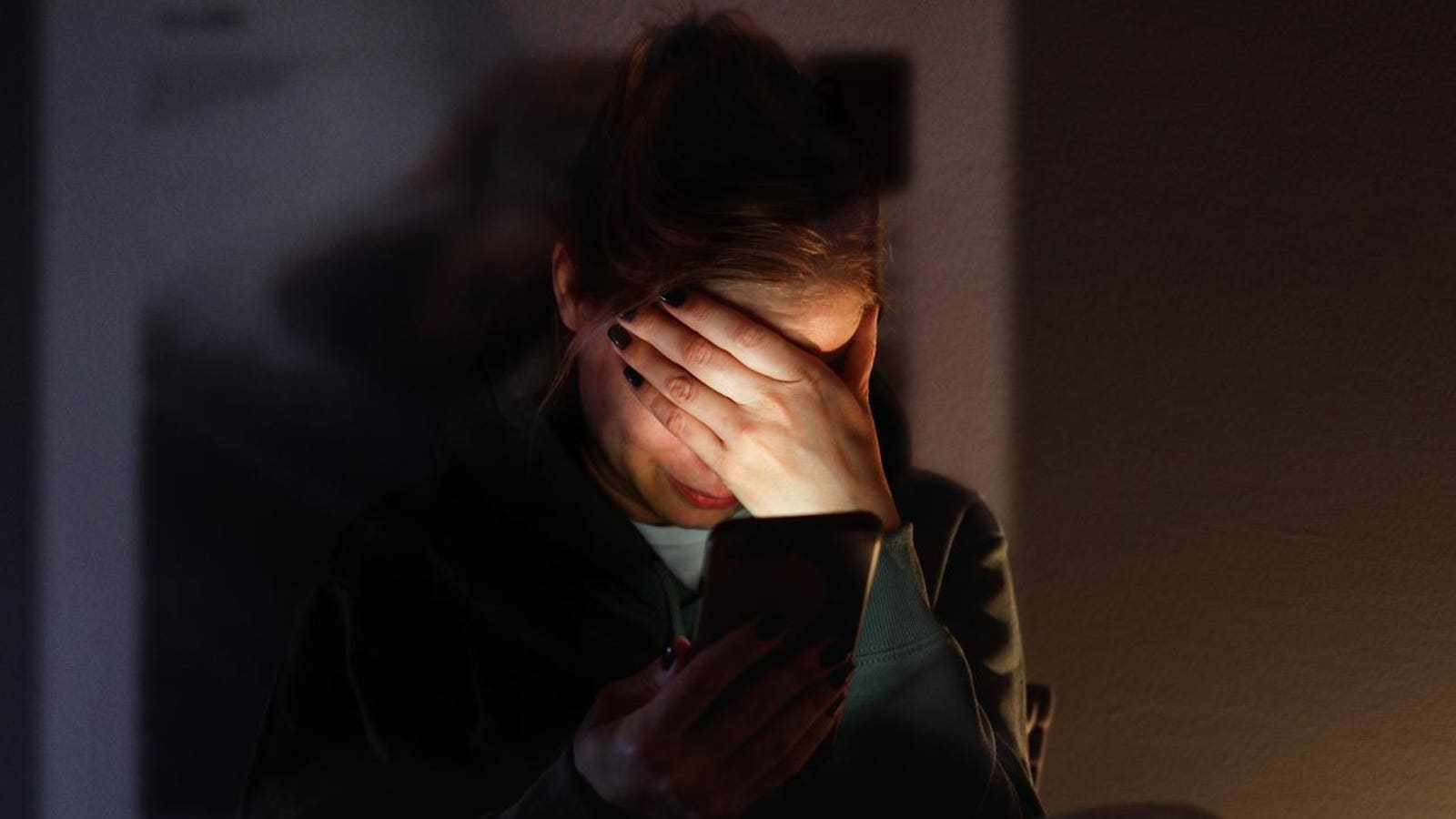The Moon is rising, with zodiacal light shining on top of it, in the breathtaking framework of ESO’s Very Large Telescope (VLT) observatory on Cerro Paranal.
ESO/Y. Beletsky
You’re stargazing in September from a Dark Sky Park, looking east under a clear night sky. You see a strange, triangular glow close to where the sun will come up, but dawn hasn’t broken yet — it’s too early. What is it? Dawn breaking very early? A distant city? Some kind of planet-shine?
This delicate triangle of light — called the “false dawn” and zodiacal light — is the glow from dust orbiting the sun. Its ethereal light may be visible in the east before dawn from this weekend for roughly two weeks, with the next 10 mornings after the new moon on Sept. 20 offering the very best views.
The “false dawn” is only visible from truly dark-sky locations, but when you see it, it’s unforgettable — a soft, tapering pyramid reaching up from the horizon that looks great in night photos. The same phenomenon appears after evening twilight in March as the so-called “false dusk.”
Here’s everything you need to know about seeing the zodiacal light this week.
Zodiacal Light: What You’re Seeing
The zodiacal light is reflected sunlight from interplanetary dust orbiting the sun in the same flat plane as the planets. It’s ancient dust from comets and asteroids — and possibly the leftovers of planet formation — reflecting light, but it’s only visible when the angles are right, and the night sky is moonless.
A theory from 2021 suggests that some of the zodiacal light is actually “Mars light” — grains of dust originally from the red planet trapped in the inner solar system. It’s an elegant, though unproven, explanation for why the glow is brightest along the planets’ shared plane in the solar system.
Zodiacal Light: Where And When To Look
Look to the eastern sky about 90 minutes before sunrise where you are on clear, transparent mornings between Sept. 20 and early October. You’ll need to observe from a site with a low horizon and no light pollution in the east.
The glow of zodiacal light aligns with the ecliptic — the sun’s path through the zodiac constellations and the plane of the solar system — which is steep at the equator and sloped at mid-northern latitudes. Zodiacal light forms a tall triangle that narrows as it climbs. It’s a beautiful, if subtle, sight.
Celestial beams of light formed from both the Milky Way and zodiacal light crisscross above the telescopes of the U.S. National Science Foundation Cerro Tololo Inter-American Observatory (CTIO), a Program of NSF NOIRLab.
CTIO/NOIRLab/NSF/AURA/P. Horále
Zodiacal Light: Observing Tips
The new moon on Sept. 20 makes this coming week perfect, with mornings completely moon-free, so the sky will remain dark enough for this extremely low-contrast phenomenon. Here are a few ways to improve your chances:
- Use a stargazing app in AR mode to show you where the ecliptic is — though the compass on your smartphone will find you due east.
- Arrive early and let your eyes dark-adapt for 20-30 minutes.
- Use averted vision — glance slightly to the side of the glow to boost its apparent brightness (your peripheral vision is more sensitive to brightness).
- To photograph zodiacal light, take roughly 10-second exposures on a high ISO (night mode on a smartphone should work OK if you use a tripod to keep it perfectly still).
What’s Next In The Night Sky
Monday, Sept. 22, sees the autumnal equinox, which can see a surge in Northern Lights thanks to Earth’s magnetic field aligning with that of the solar wind to create ideal conditions for more intense geomagnetic storms. On the same day, a partial solar eclipse will be seen from New Zealand, the South Pacific and Antarctica — the inevitable consequence of the total lunar eclipse on Sept. 7, 2025.
For exact timings, use a sunrise and sunset calculator for where you are, Stellarium Web for a sky chart and Night Sky Tonight: Visible Planets at Your Location for positions and rise/set times for planets.
Wishing you clear skies and wide eyes.









